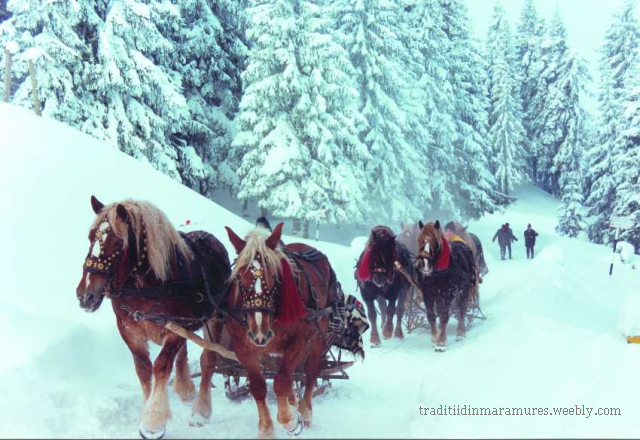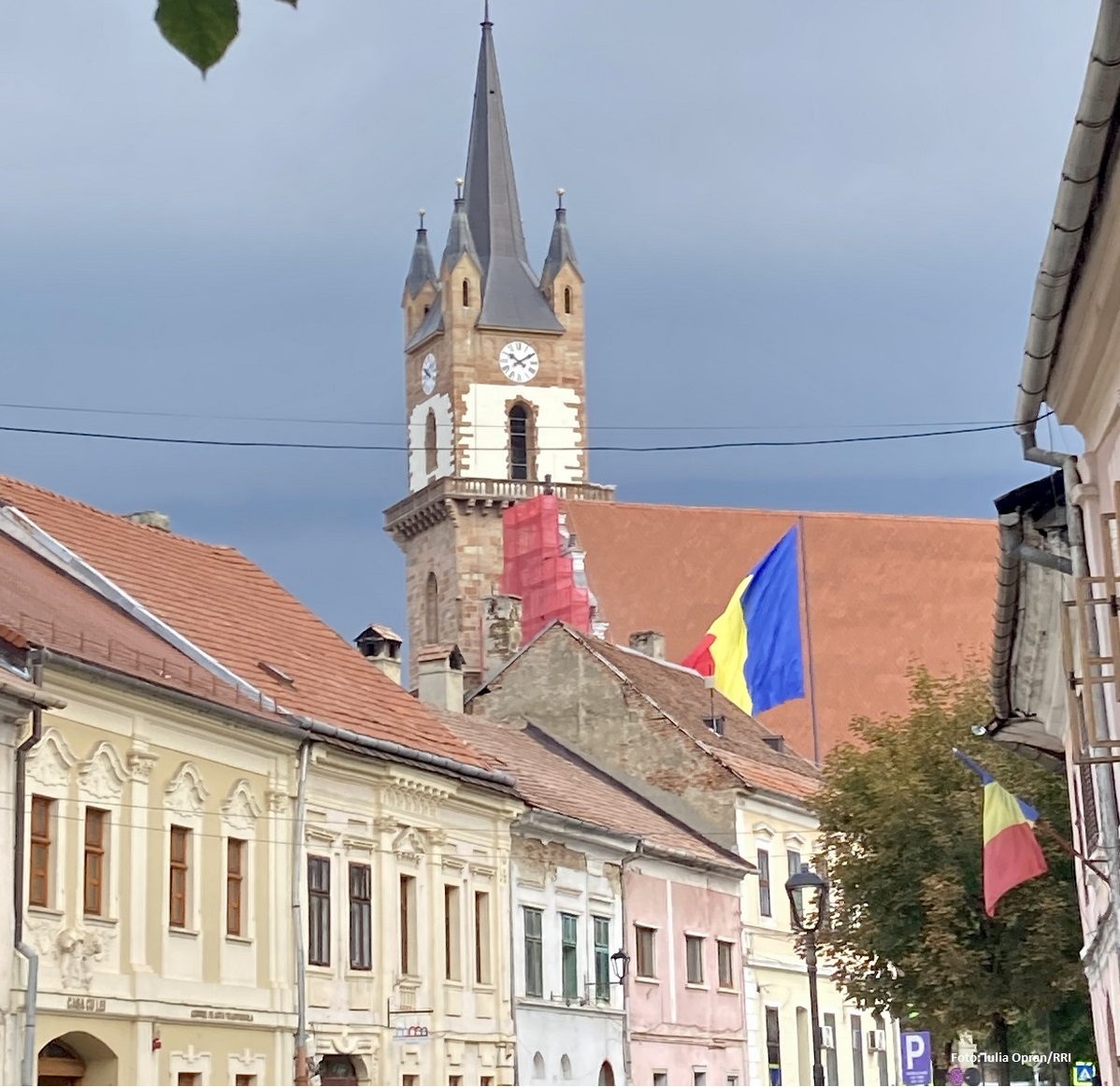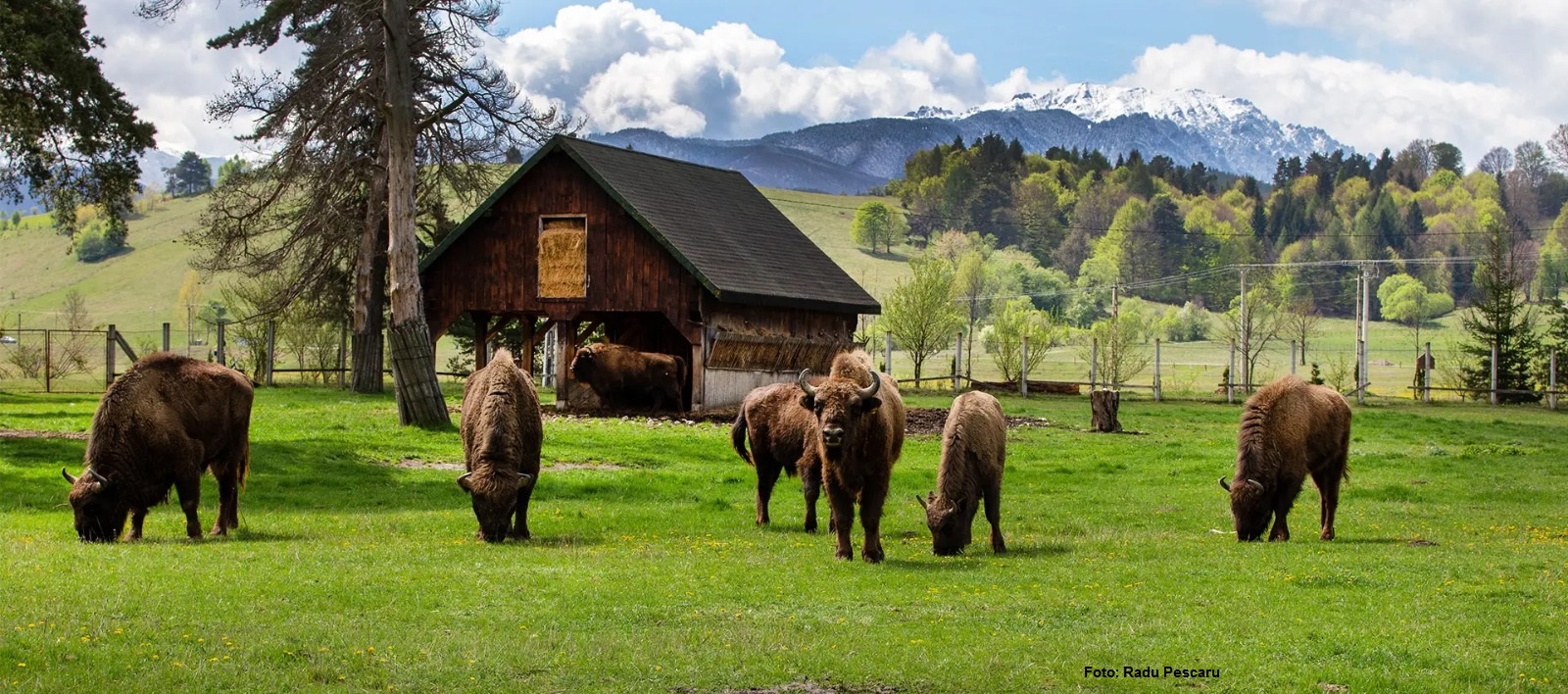Christmas Traditions
A look at the most common and spectacular Christmas traditions in Romania

România Internațional, 25.12.2014, 13:46
Starting December 6th, the feast day of Saint Nicholas, and until January 6th, the day when we celebrate the Epiphany, winter holidays are in full swing. In the past, people used to organize handicraft evening sittings where householders would spin wool and knit warm woolen or hemp clothing for the family members and would tell stories on the latest gossip in the village. They would eat boiled corn grains, dried fruit, nuts and other relishes the host had prepared on that occasion. On that day carol-singers start making Christmas arrangements. This is when lads’ groups assemble, when masks are made and carols are sung. In traditional villages, it is a time when people start tidying their homes and prepare to cook pork meals. Pigs are sacrificed on a special day called Ignat, and the meat is used to make sausages, black pudding, haggis, mincemeat cabbage rolls and pork steaks that people cook in large earthen pots on Christmas Eve.
The large snowflakes, the scented smell of freshly-baked pound cake, white-bearded Santa Claus and carolers’ voices echoing in the village, all these add up to the fairytale atmosphere setting in around Christmas time. Starting on Christmas Eve, children bearing sleigh-bells and whips start caroling, enlivening the entire village. According to tradition, it is bad omen not to welcome them, since they bring the blessed news of our Lord’s birth and ward off evil by the flick of their whips. Until late into the night, villages hum with carol tunes. Carol-singers are often rewarded with nuts, knot-shaped bread, apples and, nowadays, money.
Northern Bukovina is well-known for keeping tradition alive concerning Christmas Eve rituals. 12 plates with 12 fasting dishes are placed on a table, which in Bukovina is usually square. A fish is placed between the 12 dishes as a symbol of Christ. Next the family enacts a ritual about the marriage of earth and sky. A round-shaped bread is placed in the middle of the table, standing for the Sun and the Moon, next to a candle representing the pillar of the sky. This is followed by a special ceremony: the eldest member of the family exits the house carrying a tray with 12 spoons and one of each of the 12 food types, the round-shaped bread and the candle. He circles the house, stopping by each corner to conjure the spirit of the rain to come in due time and reasonable quantity, so that the earth can bear fruit again. The food is then given to the cattle, while the man of the house goes in and places the bread and the candle on the table. Then the entire family says Our Lord’s Prayer and thanks God for blessing them with another year of happiness and for allowing all of them to be there, since all the relatives get together at Christmas. Only then do they sit down at the table. However they don’t eat until they remember all those departed. Even today, it is believed that on December 24th, the spirits of the dead come back to life and they have to eat and drink. For this reason, once the Christmas Eve meal is ceremoniously concluded, all the leftovers are gathered on a big platter and are left by the window along with a cup of water until the Epiphany Eve, when they are either given to the cattle or thrown away in a river or spring.
On Christmas morning, the first who wake up are the children who rush into finding the presents Santa has left for them under the Christmas tree. On Christmas Day people sign carols on the Bethlehem narrative in the Bible or enact Nativity episodes from the Bible. Performances are often followed by a symbolic clash between the old year and the new one, which concludes in the form of a wishing ceremony. The star boys’ singing procession is another custom performed by children in all areas of the country to commemorate the star announcing the birth of our Lord. The star boys are children or young boys clad in traditional costumes with multicolored ribbons, sometimes wearing wizards’ hats bearing Biblical names. The carollers’ reward is all the more generous as the carol itself is more touching. The boys are given a big bread roll, bacon and sausages; the food is collected by the “Baggers”. The food is then used at another youth celebration, named “the beer”, on the second day of Christmas. To prepare that, the lads place barley or oat somewhere to sprout, well in advance, and then make the “beer”, a drink they would have for the Christmas Party.
In the Apuseni Mountains, boys go carolling with a fiddler, and visit the houses of eligible girls. In the Mures region the custom of the drums is widespread; these are a sort of drums made of animal skin. Householders receive the drummers with a lot of respect and joy, welcoming them to carol and sing in every house. The boys group is the best-known group of carollers in Fagaras Country.
The boys group custom unfolds according to a well-designed pattern, handed down from generation to generation; first, the group is formed on Sanicoara’s Day, then the host is chosen, as well as the hierarchy, the key positions being those of the great bailiff, of the small bailiff, of those responsible with taking the girls out to dance; then there are the boys who play an administrative role (the publican tending to the drinks, the cashier, who collects the pay and the gifts for the fiddlers, while the flag keeper tends to the flag — the group’s most precious object). In the villages across Brasov County there are three types of boys’ groups: boys’ groups with flags, typical for villages at the foot of the mountain, then there are the boys’ groups with tipcats, and boys’ groups with clubs, which speaks about the archaic initiation kit.
The flag is usually made of two vividly coloured headscarves, which are tied to a stick 1 to 2 meters long, wrapped up around sticks with a cross at the top, as well as various other adornments. When the group is carolling, the flag is pinned either at the loft of the hosts home, or at the gates, and is hoisted on a very long stick. Those who are not part of the group have the right to “steal” the flag, and if they can do that, the group needs to take it back by paying for so much drink as the thieves ask for (usually about 10 to 20 litres of wine) and the boys’ group is usually put to shame if their flag is stolen.
The Bistrita region also preserves old customs and traditions. On Christmas Night, kids’ teams are formed: hobbyhorse dancers, Turks, green stars, Herods, who go carolling around the village. The carolling starts from both ends of the village and when teams travel halfway through, a big round dance is formed. Then the elders get ready, they also split in groups and first carol their neighbours, their friends, and then their distant relatives. One to three people join the group at every house that receives the carollers, and in the end, at daybreak, they sing a carol called The day dawny-dawn. Then they go home, change clothes and go to church, attend Mass, and after that, they sing the carol “O, hear the glad tidings”, in the church yard. Then they come home, make merry, and the following evening they visit the relatives they did not get round to visiting the first day. That’s how people used to spend their holidays a long time ago, and that the custom has endured to this day.
In some villages in Moldavia there is also the belief that the heavens open on Christmas Night. Nowadays, festivals are organized around Christmas, re-enacting habits and customs, which are still preserved in the Romanian traditional village.






























